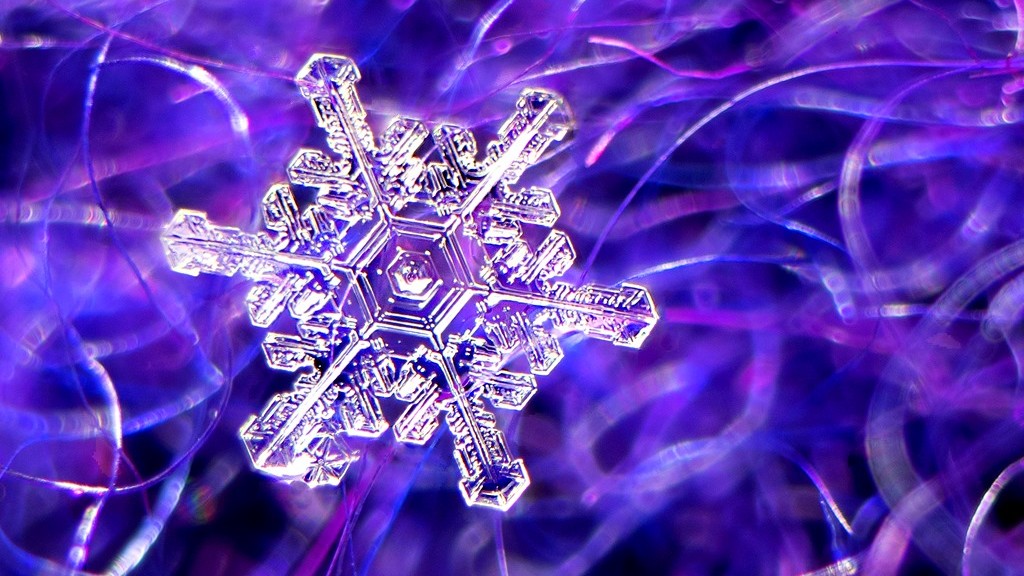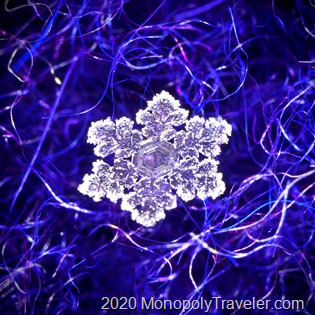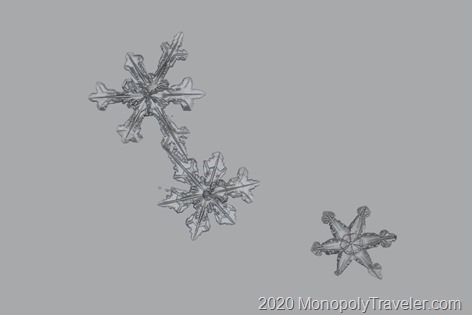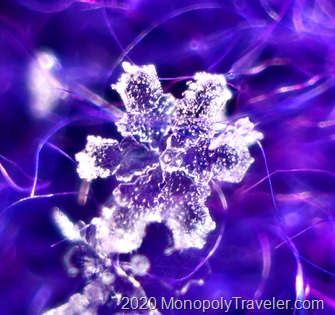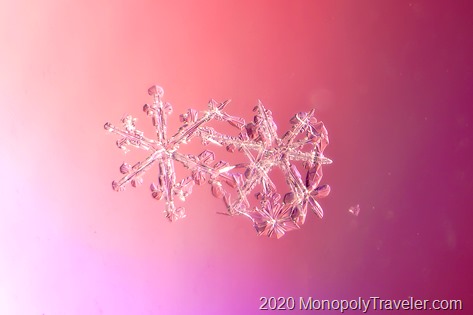People love to enter hibernation during the winter. Especially when a snowstorm is causing havoc on the roadways. All it takes is an incredible snowflake landing on my sleeve and I’m addicted. During the cold months of the year I keep much of my camera gear cold so that I can be out taking pictures in an instant. Photographing these little ice crystals is fun but what’s even better is seeing them up close and exploring each ridge or crevice. Many are incredibly beautiful when viewed in detail. I keep trying to get some great photographs of them but have yet to succeed. Viewing snowflakes in a photograph is enjoyable but also disappointing. There’s always an area that’s out of focus and I can never seem to capture. The 3-D aspect capturing each detail that makes them so captivating to me continues to elude my pictures.
The snowflake above is probably the best one to fall in front of my camera over the past few snow falls. I love the clear, symmetrical center and all of the patterns radiating out from the center. I just keep studying each ray and wondering how they formed, fell from the sky with the high winds accompanying that snowstorm, and landed on the purple glove I was using all without breaking.
This was another ice crystal that I couldn’t wait to examine up close and capture with the camera. The frosted edges created a beautiful outline of the petals in this snowflake. Again the clear and symmetrical center is so amazing to me. I know the hexagon shape is the base for many snowflakes but it always has me wondering why. What forces cause this to be the most stable formation for ice crystals whether it’s flatter flakes like this or even columnar ones or the multiple combinations in between?
The group of snowflakes above appear to be incomplete. Like they fell before finishing their design. What could have scared them out of the sky early? More likely they were evaporating before I could capture the complete flake. Most of the time these little pieces of ice art show up better with a darker background but once in awhile I like to see them as a sort of x-ray. It’s just a little different way to view them. Often a single flake makes a beautiful photo but sometimes there are too many interesting snowflakes and the only way to photograph more is to take a picture of a group of them.
Another snowflake that captured my attention when I first spotted it was the one above. It also has the frosted edges which seems to really highlight the clear ice closer to the center. Such an interesting contrast to me. It also makes it so much more visible against the background. I love the curvy lines in between each ray. What causes that during the formation in the clouds? These make each ray of this flake unique like they were all in slightly different parts of the cloud when they were created.
Below is another group of beautiful ice crystals. Each one different from the one it’s touching. I was experimenting with different backgrounds to see what I like and if I can come up with something different that might still provide an interesting contrast to these snowflakes. Ice crystals are something I’m hooked on. Since these couple of snowfalls the temperatures have warmed just enough that we’ve been experiencing more rain in central Minnesota so I haven’t had more subjects to work with as often. But when I do you can be sure I’ll be out trying to capture better photos.

